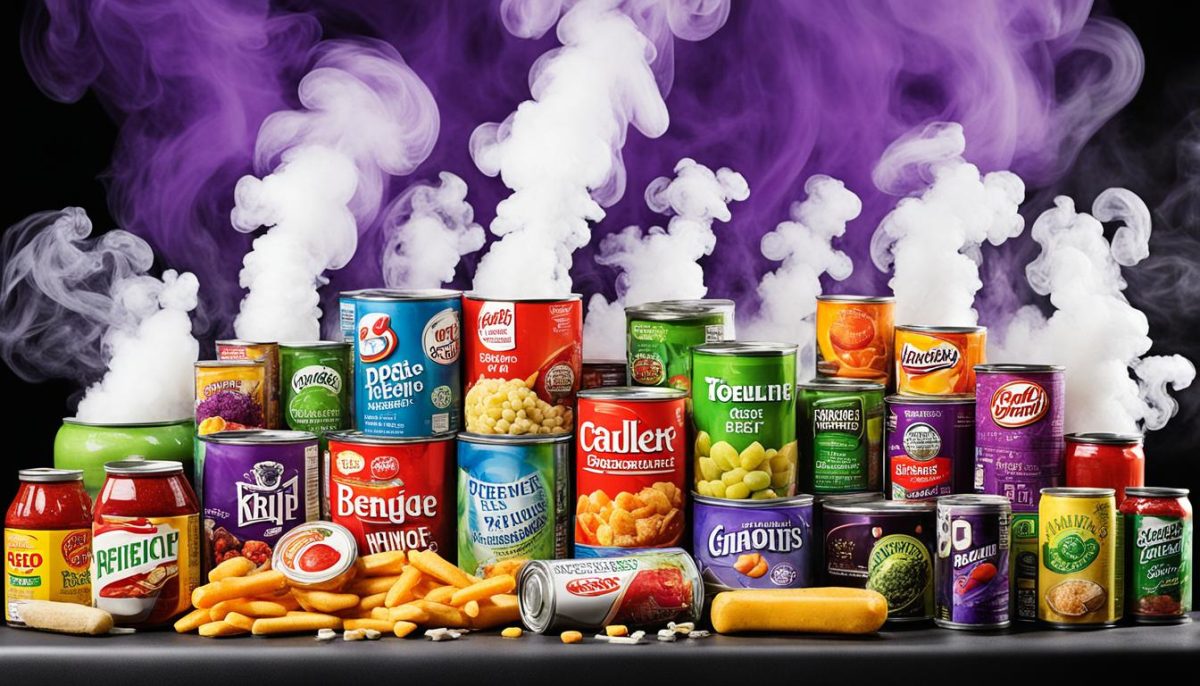Welcome to our informative article where we will explore the presence of benzene in common food products. Benzene, a potentially harmful chemical, can be found in various food items and understanding its presence is essential to make informed choices for your health and safety.
Benzene is a colorless liquid that is commonly used in the production of various chemicals. Unfortunately, it can also contaminate food products through different sources and causes. In this article, we will delve into the sources and discuss how certain production and storage methods, as well as external factors, can lead to the formation of benzene in food.
We will also highlight specific food products that are more prone to benzene contamination. By being aware of these products, you can take appropriate precautions to reduce your intake of benzene.
Stay tuned for the following sections where we will provide detailed information and insights about benzene contamination in food, its potential risks, and ways to minimize exposure. Let’s empower ourselves with knowledge to make healthier choices in our everyday lives!
Understanding Benzene Contamination in Food
When it comes to food safety, it is crucial to be aware of potential contaminants that can pose risks to our health. One such concern is benzene contamination in food. Benzene, a colorless and highly volatile organic compound, has been found in various food products. Understanding the sources and causes of benzene contamination can help us navigate the potential risks and make informed choices.
The Sources of Benzene Contamination
Benzene can be formed in food through various processes and external factors. Here are some of the primary sources of benzene contamination:
- Production methods: Certain production methods, such as using sodium benzoate as a preservative in acidic foods or treating water with chlorine, can lead to benzene formation. Exposure to heat during cooking or processing can also contribute to benzene contamination.
- Storage conditions: Improper storage of food products, especially those containing preservatives or additives, can increase the risk of benzene formation. For example, when beverages or bottled water are exposed to heat or sunlight, it can trigger chemical reactions that result in benzene production.
- External factors: Environmental pollution, such as air pollution or contamination of water sources, can introduce benzene into the food chain. Pesticides and fertilizers containing benzene compounds may also contribute to contamination.
The Impact on Food Products
Benzene contamination can affect a wide range of food products, including:
- Fruit juices
- Sodas and carbonated beverages
- Bottled water
- Certain fruits and vegetables
- Processed meats
- Packaged snacks
The susceptibility of these products to benzene contamination can vary depending on the specific production methods, storage conditions, and external factors involved.
It is important to note that not all food products contain benzene, and the levels of contamination can vary. However, being aware of the potential sources of benzene and the products that are more prone to contamination can help us take necessary precautions.

Food Products Prone to Benzene Contamination
While benzene contamination can occur in various food products, certain items are more susceptible due to their composition and processing methods. By understanding which products are more prone to benzene contamination, you can make informed choices to minimize your exposure to this harmful substance.
One example of a food product prone to benzene contamination is carbonated beverages. These drinks often contain preservatives and additives, such as sodium benzoate and ascorbic acid (vitamin C), which can react with each other in the presence of heat or light to form benzene. This reaction is more likely to occur when the beverages are exposed to sunlight or high temperatures.
Another group of products at risk of benzene contamination are processed meats, such as hot dogs and bacon. These meats often contain sodium nitrite, a preservative used to inhibit the growth of bacteria and enhance the color and flavor. However, when sodium nitrite interacts with heat, protein, and an acidic environment, it can lead to the formation of benzene.
Fruit juices, especially those made from citrus fruits, are also known to be prone to benzene contamination. The combination of ascorbic acid (vitamin C) and sodium benzoate, commonly used as preservatives in these juices, can result in the formation of benzene when exposed to heat, light, and acidic conditions.
It is important to note that the risk of benzene contamination in these products can be minimized by proper storage, handling, and avoiding prolonged exposure to heat and light. By reading labels, opting for fresh and minimally processed alternatives, and following recommended storage guidelines, you can reduce your intake of benzene and promote a healthier diet.